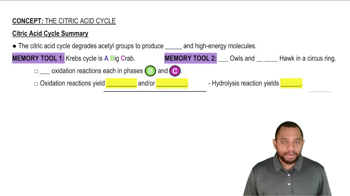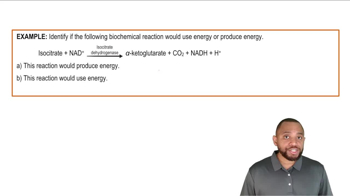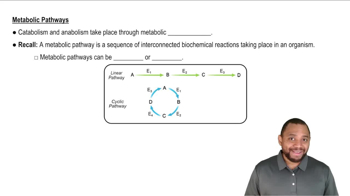Here are the essential concepts you must grasp in order to answer the question correctly.
Citric Acid Cycle
The citric acid cycle, also known as the Krebs cycle or TCA cycle, is a series of chemical reactions used by all aerobic organisms to generate energy. It occurs in the mitochondria and is a key component of cellular respiration, where acetyl-CoA is oxidized to produce ATP, NADH, and FADH2, which are essential for energy production.
Recommended video:
Citric Acid Cycle Summary Concept 12
Energy Production
The primary purpose of the citric acid cycle is to produce energy in the form of ATP. This energy is crucial for various cellular processes. The cycle also generates electron carriers, NADH and FADH2, which feed into the electron transport chain, leading to further ATP production through oxidative phosphorylation.
Recommended video:
Energy Production In Biochemical Pathways Example 1
Metabolic Intermediates
The citric acid cycle produces several metabolic intermediates that are vital for various biosynthetic pathways. These intermediates can be used to synthesize amino acids, nucleotides, and other essential biomolecules, highlighting the cycle's role not only in energy production but also in cellular metabolism and growth.
Recommended video:
Metabolic Pathways Concept 2
 Verified step by step guidance
Verified step by step guidance Verified video answer for a similar problem:
Verified video answer for a similar problem:



 1:32m
1:32m